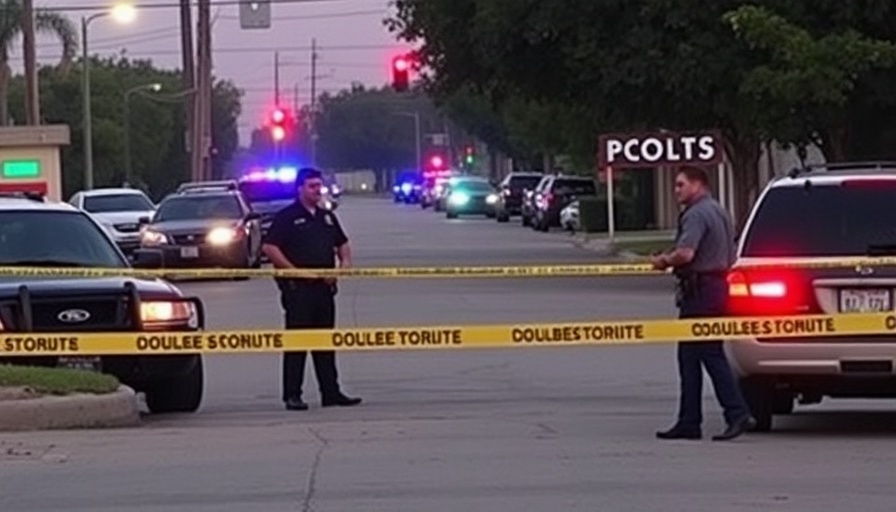
Unraveling a Fatal Confrontation: The Bounty Hunters' Approach
In a shocking incident near downtown Dallas, the events leading to the fatal shooting of Drew Knowles have raised questions about the practices of bounty hunters and the regulations governing them. Jorge Moncivais and Rodney Brown, the bounty hunters involved, attempted to apprehend Knowles based on outstanding warrants for theft and credit card abuse. The dramatic scene unfolded when the hunters used automated license plate readers to locate Knowles, ultimately boxing him in with their vehicles.
The Incident Unfolds: A Dangerous Pursuit
Witness accounts and video footage reviewed by investigators indicate that Moncivais and Brown fired into Knowles' moving car, demonstrating a concerning lack of regard for safety and legal protocols. According to arrest affidavits, the bounty hunters were not in immediate danger when they selected to use deadly force. This decision led to tragic consequences, as Knowles was shot in the back and later crashed his vehicle into a light pole. Such decisive actions spotlight the critical responsibility bounty hunters hold during apprehensions, particularly regarding the use of firearms.
Legal Implications and Regulatory Concerns
Both Moncivais and Brown now face murder charges, drawing attention to the regulatory landscape for bounty hunters in Texas. State law explicitly prohibits bounty hunters from employing firearms or using deadly force unless absolutely necessary for self-defense. The Texas Department of Public Safety (DPS) also requires bounty hunters to maintain valid security licenses; records indicate both hunters allowed their licenses to expire shortly prior to the incident. This raises concerns about oversight and accountability within the private security industry in Texas.
Broader Implications: The Debate on Bounty Hunter Practices
The situation ignites a broader conversation about the role of bounty hunters in today's society. Critics argue for stricter regulations, emphasizing the need for licenses to meet higher standards and continuous training in de-escalation techniques. Given the intensity of the situation, advocates for change suggest that employing non-lethal methods in apprehensions could have altered the outcome on that fateful day. With a heightened focus on public safety, discussions surrounding legislative reforms are likely to increase, especially in light of this tragedy.
Community Reaction: A Call for Accountability
The community's response has been varied, with some expressing outrage at the bounty hunters' methods and others advocating for the difficult role they play in apprehending fugitives. The incident, which has now drawn scrutiny from both law enforcement and local leaders, calls for transparency and accountability. As residents demand clearer guidelines and regulations, it remains crucial for the Dallas community to engage in conversations that promote safety and responsibility.
What’s Next? Implications for Bounty Hunters and the Dallas Community
This incident serves as a stark reminder of the complexities surrounding law enforcement and private security roles. With two bounty hunters now charged with murder and the aftermath still unfolding, it’s vital for stakeholders to assess the regulatory framework governing bounty hunting. The Dallas community must engage with city officials and local lawmakers to ensure future practices prioritize public safety and adhere to ethical standards.
In light of the significant ethical and legal questions raised by this incident, residents are encouraged to advocate for legislative changes that may prevent further tragedies in the future. Public advocacy can play a crucial role in reshaping policies affecting community safety. This incident should also serve as a catalyst for community engagement in public safety issues, prompting citizens to examine local government actions and oversight.
 Add Element
Add Element  Add Row
Add Row 



Write A Comment